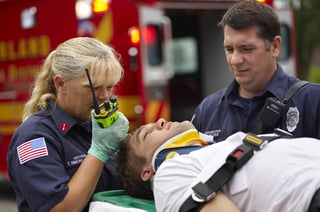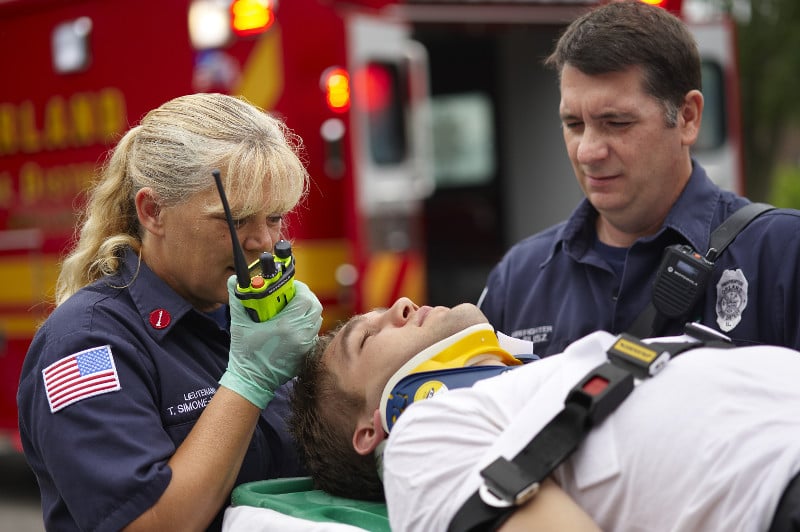If you had to choose a single profession or industry that relies on quality communication perhaps more than any other, you would be  hard-pressed to select anything other than those in public safety or emergency medical services. That’s not to downplay how important communication is in industries like education or manufacturing (it is actually incredibly important), but police officers and EMS crews rely on communication to save lives.
hard-pressed to select anything other than those in public safety or emergency medical services. That’s not to downplay how important communication is in industries like education or manufacturing (it is actually incredibly important), but police officers and EMS crews rely on communication to save lives.
While there are times where cell phones are appropriate for any profession, having EMS crews equipped with radios is an important move to make. Here are 4 reasons why two-way radios are the best choice for EMS crews:
1) Multiple Communication Options (one-to-one, one-to-many)
If you are on a cell phone, you are most likely communicating with a single person on the other end. If you are using a radio, however, you have the option to communicate one-to-one or even one-to-many.
One-to-one communication is ideal for when many people across the field (like in a weather emergency) need to report back to a single command center or individual. One-to-many is often used to provide direction to many people or units at the same time - for example, directing multiple crews to a single area during a disaster or emergency.
EMS crews need to be able to quickly relay information back to their command center, and dispatchers need the ability to communicate with various crews all at once.
2) Push-to-Talk Technology Can Save Lives
In an emergency scenario, every second counts. Natural disasters requiring disaster response, fires, and car accidents often require EMTs to communicate quickly, and two-way radios enable that option. This is due to a technology called Push-to-Talk, also known as PTT.
PTT technology is simply a button on the radio that, when pushed, opens up communication with whoever you want. Basically, EMS crews can connect with other units or the command center at the push of a button, ensuring instant communication for those situations that require split-second decision making.
3) Unique Emergency Features
Radios designed for public safety often come with certain features or applications that you just could not find on a cell phone. For example, some radios have the ability to send alerts back to the base if EMS personnel are down or run into any issues, or, offer up the crew’s position via GPS technology.
Another example is noise-cancelling technology. This feature uses the radio microphone to focus in on the voice of the speaker and block out any surrounding noises. Since an EMT may find himself on a busy street with lots of traffic after an accident, or even at a fire, there are bound to be noises all around, making this feature incredibly important.
4) Secure, Reliable Networks
Imagine a large-scale disaster like a tornado, hurricane, or earthquake. Nearly every person in the area impacted by this disaster will be trying to use their cell phones to call friends and family to inform them that they are OK. Many calls can often overpower a cell phone network and cause delays in getting calls through (or the call quality in general).
With two-way radios, EMS crews are operating on a more private network reserved for radios. This means that regardless of the scenario, emergency workers can rest assured knowing that their communication channels will be open and reliable.
If you would like to learn more about how EMS units can use two-way radios, contact Chicago Communications today or leave a question in the comments section below.



